Feather Bowling
© Thomas Wilson Shawcross 29 May 2005
I am certain that those of you who are regular readers of my blog will be as surprised as I was to learn that my writer buddies Liz and Shiela have been using the e-word regarding my essays. You heard me right. They say the topics I choose are esoteric. Why, I don’t know. But since I have been tarred with that brush, I may as well add a few feathers and write about one of my favorite sports – Feather Bowling – a topic that even I have been known to describe by using the e-word.
First, let me say that I don’t understand why Feather Bowling isn’t more popular than it is. By “more popular” I mean there should be more than one place in Michigan where one can play it! That place, of course, is the Cadieux Café in Detroit, Michigan.
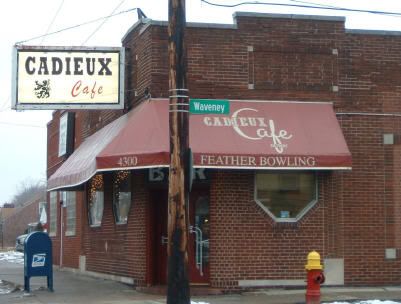
Cadieux Café
Feather Bowling is a game that originated in Belgium, where it was called Rolle Bolle.
It is exactly like American bowling except that it is played on a concave dirt lane instead of a flat wooden one, uses wooden “cheeses” instead of a bowling ball, and its objective is to land atop a feather rather than knock down wooden pins. Oh, and it is scored differently, and each team throws six cheeses, but . . . hmmm, maybe I should use the standard definition here and say it is like a combination of horseshoes and the Italian game of bocce.
When I lived in Michigan, my friends and I passed many a pleasant hour at the Cadieux Café. Our typical evening consisted of two parts: 1. Consume enormous quantities of Belgian beer and steamed mussels in the dining area of the café, and thus fortified, 2. waddle into the adjoining room and enjoy feather bowling on one of the two lanes built there for that purpose.
To explain the nuances of feather bowling, I will use the following images, which I have collected from the web site http://biology.yonsei.ac.kr :
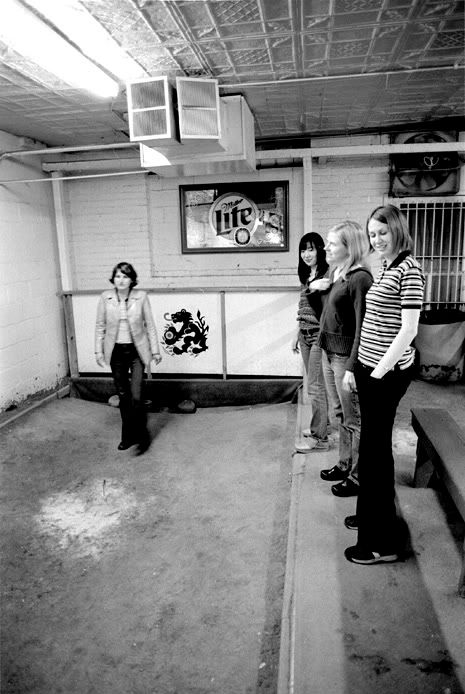
Image 1: The concave lane and pit behind it
Image 1 shows how the dirt lane is concave. It also shows one of the pits that are at the ends of each lane. If a cheese rolls into the pit, it cannot be counted in the scoring. The sharp eyed reader will notice a couple of cheeses in the pit. The even sharper-eyed reader will notice a small, dark, vertical mark in the white spot directly in front of the girl. This is a feather. There is another one at the opposite end of the lane. Usually, these were white feathers, and someone told me they were pigeon feathers. Could be . . .
Image 2 shows a feather bowler and some “cheeses.” The cheeses are wooden disks that resemble cheese wheels. As I can see in this photo, but you probably cannot, some of the cheeses are red and some are green. Now, don’t you wish you were color-blind too? I thought so . . .
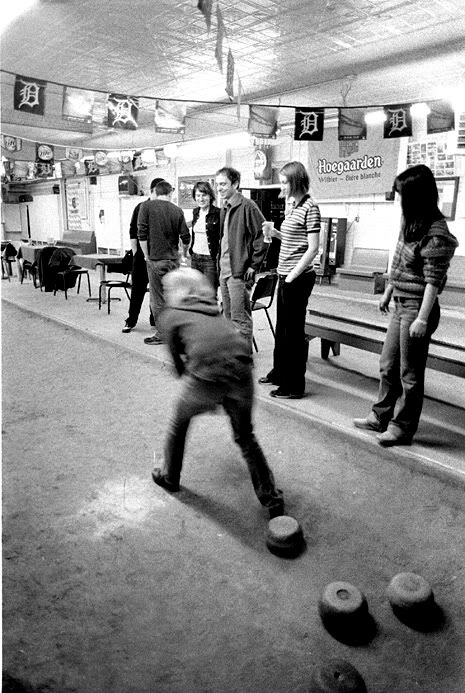
Image 2: Some red and green cheeses
The team that starts will roll all six of its red (or green) cheeses at the feather standing upright in the dirt at the opposite end of the lane. Typically, teams will try to place three cheeses as close to the feather as possible, and lag three more in front of them to act as blockers. A cheese can land directly on top of a feather (this is, in fact, hoped for), and it does not hurt the feather, which will spring smartly back into place when the cheese is removed. Typically, it will try to pretend as if nothing had happened. Feathers have their pride.
In the image below, you see the bowler has fired one cheese that appears to be aimed at an opposing team member. This is not a Tanya Harding vs. Nancy Kerrigan move. This is classic feather strategy! Due to the shape of the cheese and the concavity of the lane, this type of throw results in a sinuous roll that can avoid any blocking cheeses while still taking the bowled cheese to the desired spot. This takes a lot of practice and skill to master, and it may be that the daunting effort demanded is why we don’t see feather bowling more often.
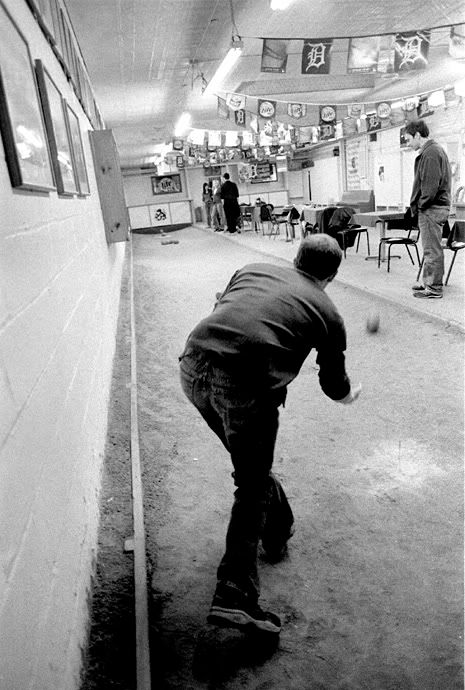
The team that places its cheeses closer to the feather than the other team gets one point for each closer cheese. A game consists of ten points and the score is kept on what looks like a giant cribbage board.
Ironically, although the game originated in Belgium, it doesn’t seem to be very popular there anymore. When I was in Belgium, I looked for a feather bowling establishment, thinking I would find a modern multi-plex with a minimum of 100 lanes, (no waiting) but I could not find even one. All of the Belgian rolle bolle images I find in the web seem to have been made in the 1940’s. I would have thought that with all their chocolate shops and frites stands they could have kept at least one rolle bolle stadium, but I guess not.
Maybe it is too esoteric for their tastes.
Below: Four cheeses and a feather
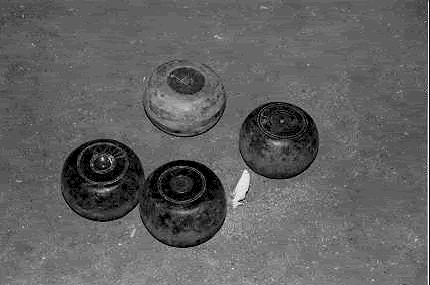
I am certain that those of you who are regular readers of my blog will be as surprised as I was to learn that my writer buddies Liz and Shiela have been using the e-word regarding my essays. You heard me right. They say the topics I choose are esoteric. Why, I don’t know. But since I have been tarred with that brush, I may as well add a few feathers and write about one of my favorite sports – Feather Bowling – a topic that even I have been known to describe by using the e-word.
First, let me say that I don’t understand why Feather Bowling isn’t more popular than it is. By “more popular” I mean there should be more than one place in Michigan where one can play it! That place, of course, is the Cadieux Café in Detroit, Michigan.

Cadieux Café
Feather Bowling is a game that originated in Belgium, where it was called Rolle Bolle.
It is exactly like American bowling except that it is played on a concave dirt lane instead of a flat wooden one, uses wooden “cheeses” instead of a bowling ball, and its objective is to land atop a feather rather than knock down wooden pins. Oh, and it is scored differently, and each team throws six cheeses, but . . . hmmm, maybe I should use the standard definition here and say it is like a combination of horseshoes and the Italian game of bocce.
When I lived in Michigan, my friends and I passed many a pleasant hour at the Cadieux Café. Our typical evening consisted of two parts: 1. Consume enormous quantities of Belgian beer and steamed mussels in the dining area of the café, and thus fortified, 2. waddle into the adjoining room and enjoy feather bowling on one of the two lanes built there for that purpose.
To explain the nuances of feather bowling, I will use the following images, which I have collected from the web site http://biology.yonsei.ac.kr :

Image 1: The concave lane and pit behind it
Image 1 shows how the dirt lane is concave. It also shows one of the pits that are at the ends of each lane. If a cheese rolls into the pit, it cannot be counted in the scoring. The sharp eyed reader will notice a couple of cheeses in the pit. The even sharper-eyed reader will notice a small, dark, vertical mark in the white spot directly in front of the girl. This is a feather. There is another one at the opposite end of the lane. Usually, these were white feathers, and someone told me they were pigeon feathers. Could be . . .
Image 2 shows a feather bowler and some “cheeses.” The cheeses are wooden disks that resemble cheese wheels. As I can see in this photo, but you probably cannot, some of the cheeses are red and some are green. Now, don’t you wish you were color-blind too? I thought so . . .

Image 2: Some red and green cheeses
The team that starts will roll all six of its red (or green) cheeses at the feather standing upright in the dirt at the opposite end of the lane. Typically, teams will try to place three cheeses as close to the feather as possible, and lag three more in front of them to act as blockers. A cheese can land directly on top of a feather (this is, in fact, hoped for), and it does not hurt the feather, which will spring smartly back into place when the cheese is removed. Typically, it will try to pretend as if nothing had happened. Feathers have their pride.
In the image below, you see the bowler has fired one cheese that appears to be aimed at an opposing team member. This is not a Tanya Harding vs. Nancy Kerrigan move. This is classic feather strategy! Due to the shape of the cheese and the concavity of the lane, this type of throw results in a sinuous roll that can avoid any blocking cheeses while still taking the bowled cheese to the desired spot. This takes a lot of practice and skill to master, and it may be that the daunting effort demanded is why we don’t see feather bowling more often.

The team that places its cheeses closer to the feather than the other team gets one point for each closer cheese. A game consists of ten points and the score is kept on what looks like a giant cribbage board.
Ironically, although the game originated in Belgium, it doesn’t seem to be very popular there anymore. When I was in Belgium, I looked for a feather bowling establishment, thinking I would find a modern multi-plex with a minimum of 100 lanes, (no waiting) but I could not find even one. All of the Belgian rolle bolle images I find in the web seem to have been made in the 1940’s. I would have thought that with all their chocolate shops and frites stands they could have kept at least one rolle bolle stadium, but I guess not.
Maybe it is too esoteric for their tastes.
Below: Four cheeses and a feather



1 Comments:
I actually went to that yonsei website, and then I actually downloaded the software to let me read that Korean language text. What I didn't do was first learn the korean language, I just didn't have the time. So I googled your feather bowling and I want you to know I found all those same pics you collected without first having to learn Korean. It was my lucky day I thought.
Post a Comment
<< Home